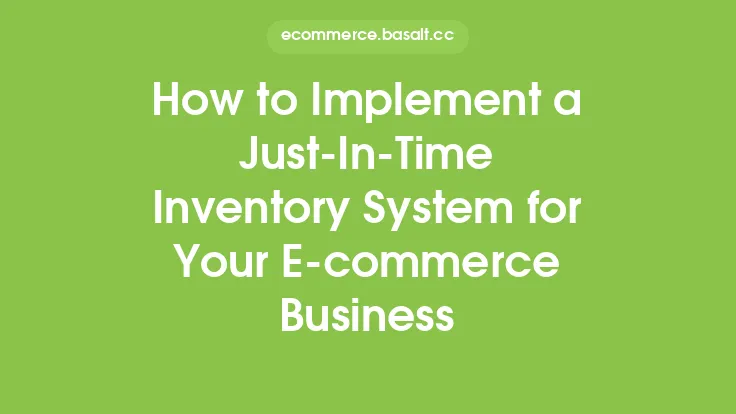In the world of e-commerce, having a well-structured dashboard is crucial for tracking the health and performance of an online store. A dashboard serves as a central hub, providing a quick and easy-to-understand overview of key metrics and performance indicators. It enables store owners and managers to monitor progress, identify areas for improvement, and make data-driven decisions to drive growth and success. A well-designed e-commerce dashboard should include a range of essential metrics and features, which will be discussed in detail below.
Introduction to E-commerce Dashboards
An e-commerce dashboard is a visual representation of an online store's performance, typically displayed on a single page or screen. It provides a snapshot of key metrics, such as sales, revenue, customer behavior, and marketing performance, allowing store owners to quickly assess the health of their business. A good dashboard should be customizable, allowing users to tailor the metrics and features to their specific needs and goals. This might include tracking sales by product category, monitoring customer demographics, or analyzing the effectiveness of different marketing channels.
Key Performance Indicators (KPIs) for E-commerce Dashboards
When it comes to creating an effective e-commerce dashboard, there are several key performance indicators (KPIs) that should be included. These might include:
- Sales and revenue metrics, such as total sales, average order value, and conversion rate
- Customer metrics, such as customer acquisition cost, customer lifetime value, and customer retention rate
- Marketing metrics, such as website traffic, social media engagement, and email marketing open rates
- Product metrics, such as product sales, product returns, and product profitability
- Operational metrics, such as order fulfillment rate, shipping time, and customer satisfaction ratings
These KPIs provide a comprehensive overview of an online store's performance, allowing store owners to identify areas for improvement and make data-driven decisions.
Designing an Effective E-commerce Dashboard
When designing an e-commerce dashboard, there are several best practices to keep in mind. First, the dashboard should be easy to navigate and understand, with clear and concise labels and visuals. It's also important to prioritize the most important metrics and features, avoiding clutter and unnecessary information. A good dashboard should be customizable, allowing users to tailor the metrics and features to their specific needs and goals. Additionally, the dashboard should be accessible on a range of devices, including desktops, laptops, and mobile devices.
Common E-commerce Dashboard Tools and Features
There are a range of tools and features that can be included in an e-commerce dashboard, depending on the specific needs and goals of the online store. Some common features include:
- Sales and revenue tracking, including real-time sales data and historical sales trends
- Customer segmentation and analysis, including demographic data and customer behavior
- Marketing automation and analytics, including email marketing, social media, and paid advertising
- Product management and optimization, including product sales, product returns, and product profitability
- Operational management and logistics, including order fulfillment, shipping, and customer satisfaction
Some popular e-commerce dashboard tools include Google Analytics, Shopify, and Magento, which offer a range of features and integrations to help store owners track and manage their online business.
Best Practices for Using E-commerce Dashboards
To get the most out of an e-commerce dashboard, there are several best practices to keep in mind. First, it's essential to regularly review and update the dashboard, ensuring that the metrics and features remain relevant and accurate. It's also important to set clear goals and targets, using the dashboard to track progress and identify areas for improvement. Additionally, store owners should use the dashboard to inform data-driven decisions, rather than relying on intuition or anecdotal evidence. Finally, the dashboard should be shared with relevant team members and stakeholders, ensuring that everyone is on the same page and working towards common goals.
Common Challenges and Limitations of E-commerce Dashboards
While e-commerce dashboards can be a powerful tool for tracking and managing an online store, there are several common challenges and limitations to be aware of. One of the biggest challenges is data overload, where the dashboard becomes cluttered with too much information, making it difficult to identify key trends and insights. Another challenge is data accuracy, where incorrect or incomplete data can lead to misleading insights and poor decision-making. Additionally, some dashboards may not be customizable or scalable, limiting their usefulness for larger or more complex online stores.
Future of E-commerce Dashboards
As the e-commerce landscape continues to evolve, it's likely that dashboards will play an increasingly important role in tracking and managing online stores. One trend is the use of artificial intelligence (AI) and machine learning (ML) to analyze and interpret dashboard data, providing more accurate and actionable insights. Another trend is the integration of dashboards with other business systems, such as customer relationship management (CRM) and enterprise resource planning (ERP) software. Finally, there is a growing focus on mobile and cloud-based dashboards, allowing store owners to access and manage their online business from anywhere, at any time.
Conclusion
In conclusion, a well-designed e-commerce dashboard is essential for tracking the health and performance of an online store. By including key performance indicators, such as sales and revenue metrics, customer metrics, and marketing metrics, store owners can gain a comprehensive understanding of their business and make data-driven decisions to drive growth and success. By following best practices, such as regularly reviewing and updating the dashboard, setting clear goals and targets, and using the dashboard to inform decision-making, store owners can get the most out of their dashboard and stay ahead of the competition. Whether you're just starting out or looking to optimize your existing online store, a well-designed e-commerce dashboard is an essential tool for achieving success in the world of e-commerce.




